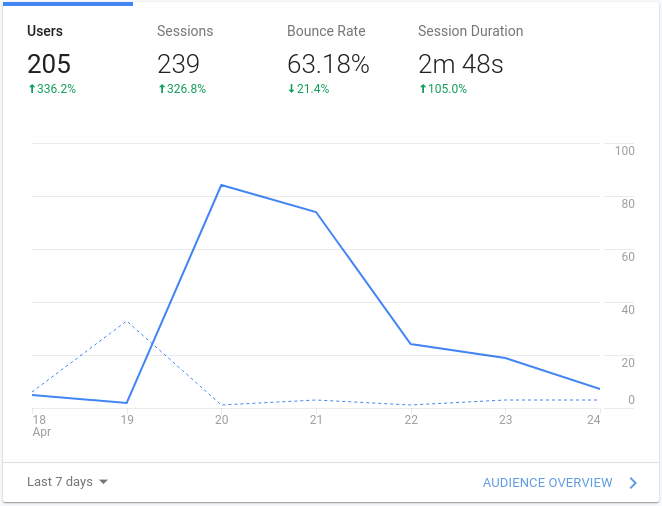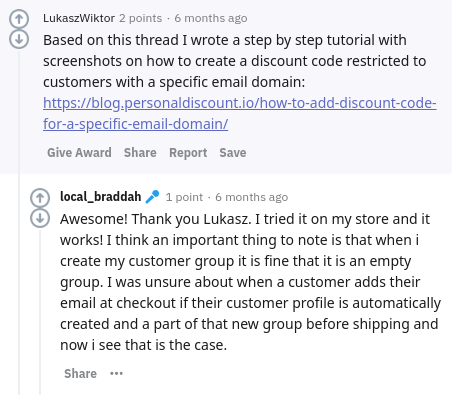Small tech startups always struggle with lead generation. And without a marketing team it’s usually the founders who have to put on the growth hacker hat. Let’s have a look at a few popular strategies, and how we can follow a few 80/20 rules to hustle effectively while freeing up some time for other responsibilities.
Syften
Disclosure: I’m also the maker behind Syften.
Syften is a social listening tool for tech startups. It sends a Slack notification when a relevant keyword or phrase is mentioned on sites like Twitter, Reddit or Stack Exchange. It can either be a gold mine of qualified leads or a source of useless noise - the difficulty lies in figuring out which conversations we wish to uncover.
I use Syften to promote both Code Dog and Syften itself. Here are a few examples of how it helps me and others.
Raising brand awareness
I’m sure you’ve heard of the effective frequency:
The second time, they don't notice it.
The third time, they are aware that it is there.
The fourth time, they have a fleeting sense that they've seen it somewhere before.
The fifth time, they actually read the ad.
The sixth time they thumb their nose at it.
The seventh time, they start to get a little irritated with it.
The eighth time, they start to think, "Here's that confounded ad again."
The ninth time, they start to wonder if they're missing out on something.
The tenth time, they ask their friends and neighbors if they've tried it.
The eleventh time, they wonder how the company is paying for all these ads.
The twelfth time, they start to think that it must be a good product.
The thirteenth time, they start to feel the product has value.
The fourteenth time, they start to remember wanting a product exactly like this for a long time.
The fifteenth time, they start to yearn for it because they can't afford to buy it.
The sixteenth time, they accept the fact that they will buy it sometime in the future.
The seventeenth time, they make a note to buy the product.
The eighteenth time, they curse their poverty for not allowing them to buy this terrific product.
The nineteenth time, they count their money very carefully.
The twentieth time prospects see the ad, they buy what is offering.
Even if your post doesn’t directly promote your business you can raise your brand awareness in your community by just being helpful.
Here is my post in a thread on Indie Hackers that asked about server costs:

And here is the traffic to my blog that it generated:

That’s 200 potential customers who’ve at least read what I’m offering.
Building a reputation
It’s easy to become a renowned expert if your field is narrow enough. By writing about the few most popular problems in your niche you can later provide in depth answers by just copying a few paragraphs from your article. You can see that my friend Lukasz has become very good at it:

Read how he uses Syften to become an expert in his field.
Staying on top of competition
Naturally, I’m monitoring a bunch of topics related to social listening. One day this showed up:

Maybe he knows something I don’t? Maybe we can work together? At the very least I can reach out.
Taking advantage when opportunities present themselves
Sometimes someone will post your article on Hacker News, Lobsters or somewhere similar. And sometimes it just withers and dies. If you and your team can get a notification you can give it that initial bump needed for success.
And when your article reaches the top you can get notified when someone leaves a comment. Don’t leave any questions unanswered.

And make sure to at least thank your users when they’re recommending your product:

Backlink outreach
The best time for backlink outreach is when the article is still fresh. And the first thing a blogger does after publishing a new article is to tweet about it.

Summary
Social listening is tough to get right on the first try, but after getting to know your environment and adjusting your filters it can be extremely valuable.